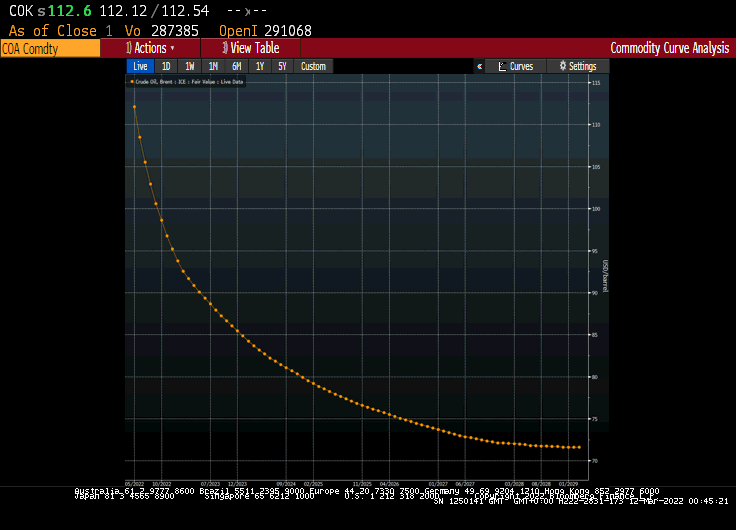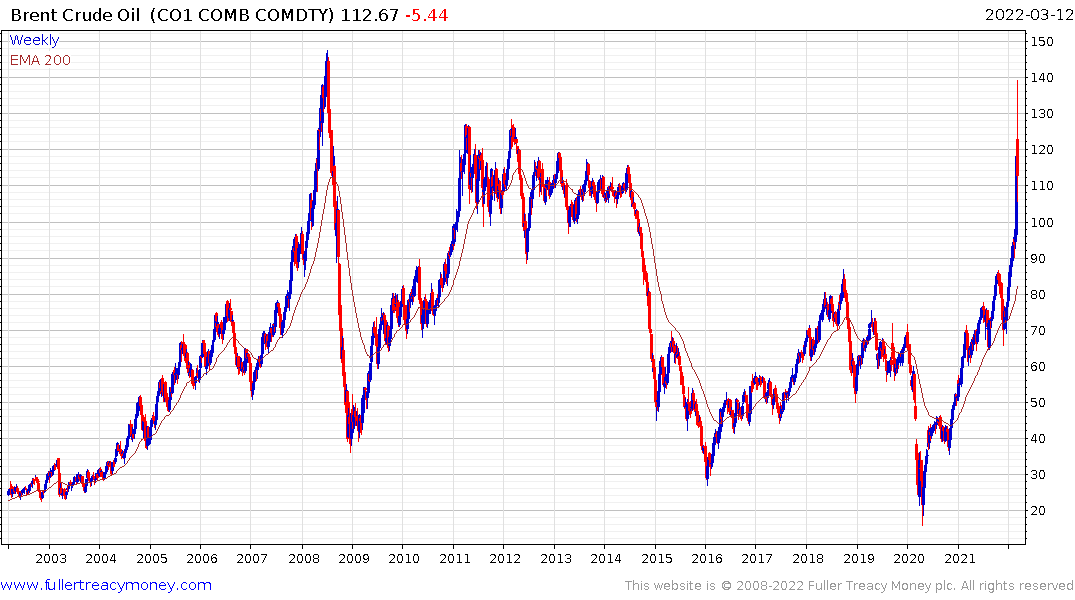Biden's Demands for Oil Collide With Drillers Reining In Output
This article from Bloomberg may be of interest to subscribers. Here is a section:
U.S. shale producers expect the oil price spike to be short-term, and shareholders don’t want companies investing capital in robust drilling programs delivering new production in 18 months, Pioneer Natural Resources Co. Chief Executive Officer Scott Sheffield said Wednesday. Oil futures indicate companies would get lower prices for crude that begins flowing in 12 to 18 months.
The administration’s approach assumes oil producers will turn on a dime in response to pleas from the same people “telling everybody that they are going to be obsolete in 30 or 40 years,” said Benjamin Salisbury, director of research at Height Capital Markets.
Investors in shale also have brushed aside arguments that drillers should crank up production because it’s their patriotic duty. Many still bear scars from the last boom-and-bust cycle, when companies chased production growth, ultimately contributing to a glut that drive down prices.
“The upstream industry is not a public service industry,” said Ben Dell, founder of Kimmeridge Energy Management. “For 10 years we made no money. The industry is profitable for two months, and the argument is that we’re supposed to price down the product or give away margins to support the consumer.”
Shale drilling is capital intensive. The days when money would be thrown at the sector with little concern for profitability are over. Investors now demand returns. Unconventional wells require constant drilling to sustain production. Within months of the cessation of drilling, volumes shrink. That means these kinds of wells are price sensitive. It is possible to ramp up production provided future production can be hedged at attractive prices.

The market is currently in steep backwardation. August 2023 futures are currently trading at $80. That’s easily profitable for most shale companies. They are also keen to remain profitable after that, so they have an interest in ensuring prices stay higher for longer.
There a couple of different points that are worth considering. The logistics of ramping up production is being regarded as an impedient. They need labour, sand, chemicals and other materials. The supply chain difficulties and wages are inhibiting factors to a rapid swift-on of new production. However, with a sufficiently high incentive, these factors should be capable of being overcome.
When President Biden took office one of his first acts was to ban drilling on federal land. Companies like Devon Energy and EOG Resources have substantial packages of drilling rights in federal land and have been unable to drill. The carrot to encourage additional activity from the oil sector would be to roll back some of the green movements most cherished measures. It remains to be seen how willing the Biden administration is to do that.
Thanks to a subscriber for this report from Goldman Sachs. Here is a section on Russia’s capital account:
With its foreign assets frozen, the Russian Central Bank is closing its capital account, implying a potential drop in commodity exports to match imports (or turn into a dollar-denominated economy). Even if Russian oil and gas companies act as custodians for the FX surplus generated by energy exports, current sanctions would prevent transfer of these surpluses to the Central Bank or Treasury to make sovereign debt payments or pay other receipts. In addition, there would remain the threat of potential future Western seizure of these accumulated corporate foreign FX reserves. As a result, while a balanced capital account would still allow for exports, trade would progressively be forced to match imports on a nominal $ basis.
Importantly, each move lower in commodity exports, and hence global supply, would then raise the unit value of the remaining exports, forcing a further reduction in barrels to keep the nominal value of exports constant. In effect, a closed capital account creates a backward bending supply curve for Russian commodity exports - less supply raises prices, which incentivizes even less supply. The key additional risk for Russian oil exports would come from any potential default from its private oil and gas exporters (or nationalization followed by sovereign default) as potential export seizures would further reduce the incentive to export.
Storage capacity and geology would admittedly slow the contraction in Russian exports. We estimate Russian oil available spare storage capacity at 80 mb, filled within a month in a severe disruption scenario (with floating storage in turn contracting the global availability of vessels). At the field level, while Russia was able to cut production by 2 mb/d in May 2020, such a process has had clear scarring effects for its low pressure conventional producing reservoirs.
Russia’s oil will find a market...primarily in China. The prospect of a petrorenminbi relationship is gaining by the day where China will buy Russia’s commodities and Russia will invest in China’s government bonds. That prospect is also contributing to the pressure on Chinese tech companies as repatriation risk increases. China is much more interwoven with the global economy that Russia. The unwinding process will be both lengthy and painful.

Brent crude oil surged, then pulled back sharply from the $140 to stabilise around $110. Rather than listen to what Putin or Zelensky say, it is probably more productive to look at what they are doing. Russia is bringing up veterans from the Middle East to fight in Ukraine and is continuing to shell several cities. Ukraine is receiving weapons by the plane load several times a day. This continues to look like a long protracted war where the humanitarian crisis is going to get progressively worse. That’s suggests prices for oil are likely to stay higher for longer.


